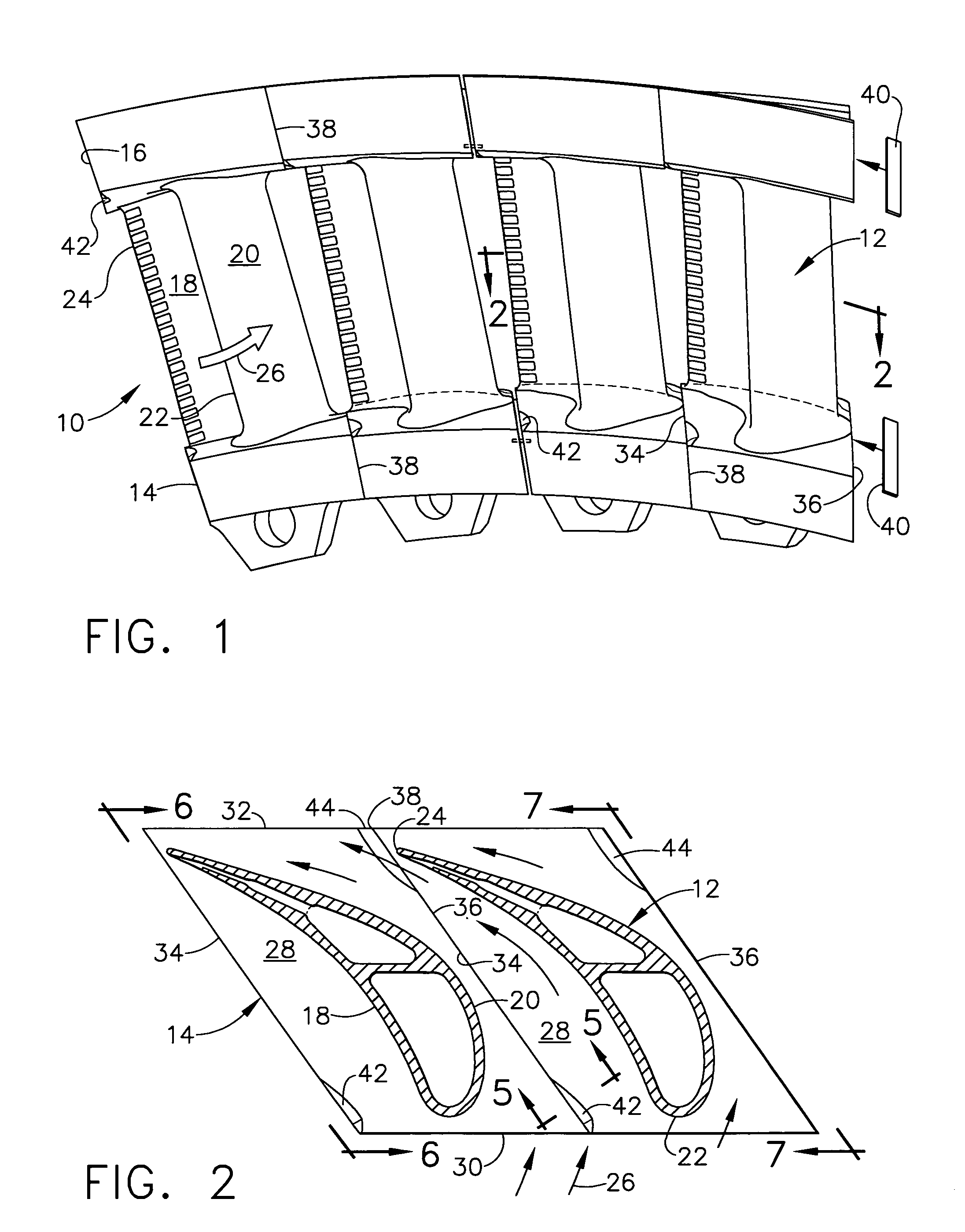Bullnose step turbine nozzle
a turbine nozzle and step turbine technology, applied in the direction of machines/engines, liquid fuel engines, supersonic fluid pumps, etc., can solve the problems of random differences in the relative positions of adjacent components, substantial thermal expansion and contraction, and correspondingly affecting the size of the tip clearan
- Summary
- Abstract
- Description
- Claims
- Application Information
AI Technical Summary
Benefits of technology
Problems solved by technology
Method used
Image
Examples
Embodiment Construction
[0034]Illustrated in FIG. 1 is an arcuate portion of an annular first stage high pressure turbine nozzle 10 for a gas turbine engine. The nozzle is axisymmetric about the axial centerline axis of the engine and includes a plurality of hollow stator vanes 12 integrally joined at radially opposite root ends to radially inner and outer arcuate bands 14,16. For example, the individual vanes 12 may be cast with their corresponding inner and outer bands in a unitary configuration thereof.
[0035]As additionally illustrated in FIG. 2, each of the vanes 12 has an aerodynamic airfoil configuration with a generally concave pressure side 18, and a circumferentially or laterally opposite, generally convex suction side 20. The two sides extend axially in chord between opposite leading and trailing edges 22,24 which extend the full radial span of each vane airfoil between the two bands 14,16.
[0036]The individual vanes themselves may have any conventional configuration and typically include internal...
PUM
 Login to View More
Login to View More Abstract
Description
Claims
Application Information
 Login to View More
Login to View More - R&D
- Intellectual Property
- Life Sciences
- Materials
- Tech Scout
- Unparalleled Data Quality
- Higher Quality Content
- 60% Fewer Hallucinations
Browse by: Latest US Patents, China's latest patents, Technical Efficacy Thesaurus, Application Domain, Technology Topic, Popular Technical Reports.
© 2025 PatSnap. All rights reserved.Legal|Privacy policy|Modern Slavery Act Transparency Statement|Sitemap|About US| Contact US: help@patsnap.com



